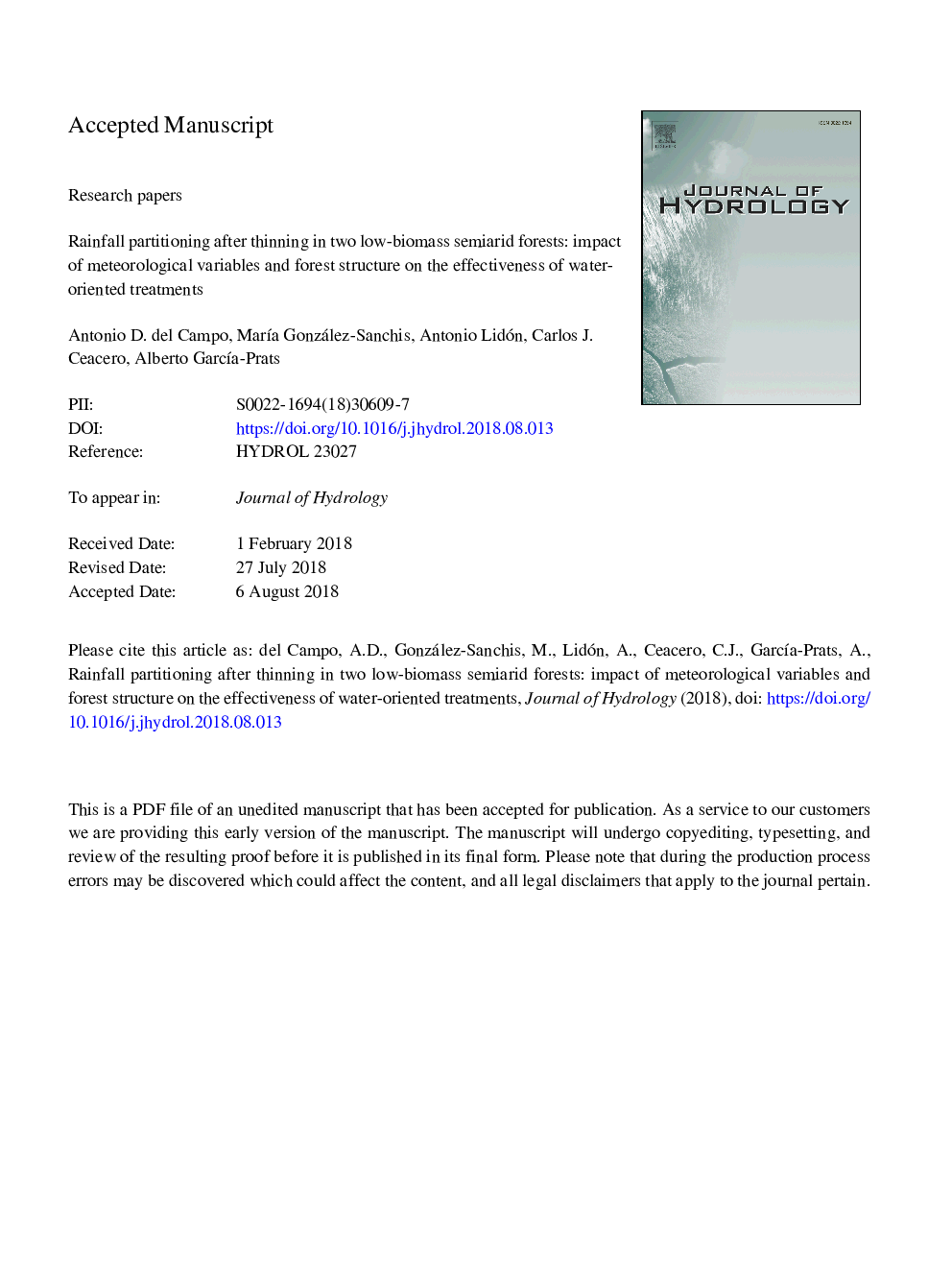| کد مقاله | کد نشریه | سال انتشار | مقاله انگلیسی | نسخه تمام متن |
|---|---|---|---|---|
| 8894424 | 1629889 | 2018 | 51 صفحه PDF | دانلود رایگان |
عنوان انگلیسی مقاله ISI
Rainfall partitioning after thinning in two low-biomass semiarid forests: Impact of meteorological variables and forest structure on the effectiveness of water-oriented treatments
ترجمه فارسی عنوان
پراکندگی خاک پس از نازک شدن در دو جنگل نیمه خشک با کمبود زیست توده: تاثیر متغیرهای هواشناسی و ساختار جنگل بر اثربخشی روش های
دانلود مقاله + سفارش ترجمه
دانلود مقاله ISI انگلیسی
رایگان برای ایرانیان
کلمات کلیدی
موضوعات مرتبط
مهندسی و علوم پایه
علوم زمین و سیارات
فرآیندهای سطح زمین
چکیده انگلیسی
Water-oriented forest management is an urgent need in semiarid catchments. In the case of low-biomass forests and shrublands, the magnitude, efficiency and temporal duration of thinning effects on rainfall partitioning needs further attention. This work studies the effects of juvenile thinning and shrub clearing on stemflow (Stf), throughfall (Thr) and interception (It) in two low-biomass forests (CAL: post-fire Aleppo pine saplings with 74% of basal area, BA, removed; and HU: evergreen oak coppice with 41% of BA removed), as well as the relative contribution of the event meteorology. The effects are compared with a control plot during the first 3-4â¯years. Stf rate (%) decreased with density and, on a tree scale, it was enhanced by the treatment only in the bigger oaks. Event Thr increased from 55 to 81% and from 68 to 86% of gross rainfall (Pg) for CAL and HU respectively after thinning, resulting in about 15% less intercepted Pg. High evaporative conditions and an open (ventilated) forest structure led to high It rates in the controls when comparing with other studies, thus making the treatments more efficient in net precipitation (Pn) gain (Pg intercepted decreased 17% or 2.3% per unit of LAI or BA removed respectively). In general, depths (mm) were mostly explained (>75%) by the rainfall characteristics of the event (e.g. amount, duration, intensity), with a limited contribution from forest structure (e.g. cover, LAI) and event meteorology (e.g. temperature, wind speed, vapor pressure deficit). On the contrary, when expressed as rates (% of Pg), forest structure and event-meteorology gained importance (explaining 25-65%), especially in the drier site (CAL). In this site, the low gain in Pn (â¼25â¯mm per year on average) was offset with no temporal dampening during the span of this study, as observed in the wetter site (HU), where plant growth tended to mitigate the effect of the treatment by the end of the study. The results presented here make a contribution to a better understanding of the effects of water-oriented forest management in low-biomass semiarid forests.
ناشر
Database: Elsevier - ScienceDirect (ساینس دایرکت)
Journal: Journal of Hydrology - Volume 565, October 2018, Pages 74-86
Journal: Journal of Hydrology - Volume 565, October 2018, Pages 74-86
نویسندگان
Antonio D. del Campo, MarÃa González-Sanchis, Antonio Lidón, Carlos J. Ceacero, Alberto GarcÃa-Prats,
